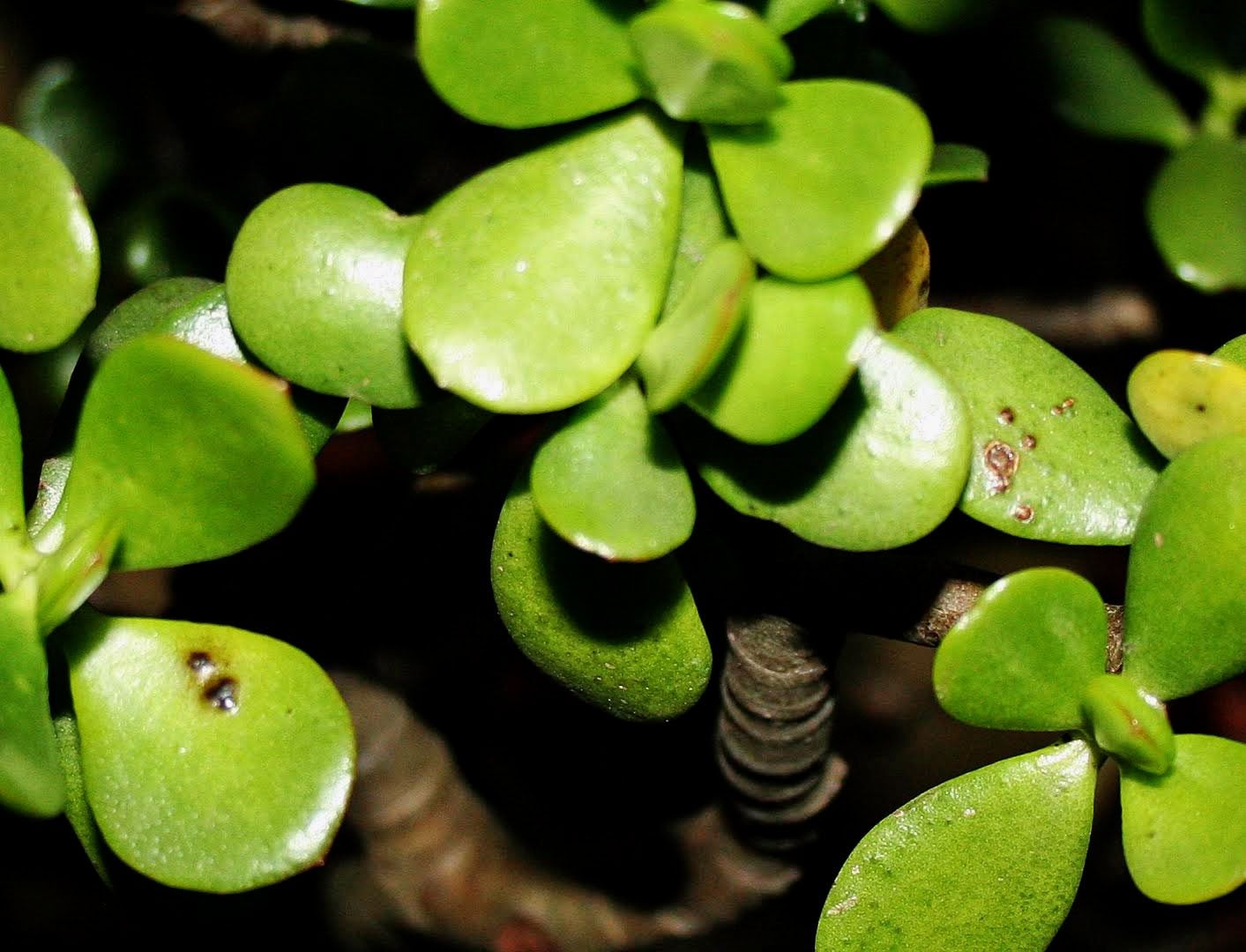Black Spots On Jade Plant: Reasons A Jade Plant Has Black Spots


Jade plants are one of the most popular succulent houseplants. There are many varieties from which to choose, each of which has similar cultivation needs. Jade plant problems that cause black spots range from insects, viruses, fungal disease and even incorrect care. Succulents like jades have low moisture needs and can become seriously damaged in poorly draining containers and planting media. Sucking insects and various diseases can also take a toll on foliar health and appearance. It is important to investigate possible causes for spots on jade plant leaves. Proper diagnosis can lead to correction of the issue and the return of your plant's health.
What Causes Black Spots on Jade Plant?
Who isn't charmed by the jade plant's chubby leaves and ease of care? If the plant is in the correct light, a low humidity area and has the proper potting mix, these plants don't require a lot of babying. However, even the best succulent gardener may find their plant has some issues, chiefly black spots on jade plant. The spots can lead to serious decline of plant health and even death if not properly addressed. One of the most common jade plant problems that causes the issue is incorrect watering and drainage, but there are a few other potential issues that can be compromising your plant. Jade plants thrive in dry, sandy soils with low fertility. The average potting soil is probably too moisture retaining and rich for these South African succulents. Well-draining soil with plenty of grit and a container which allows moisture to evaporate will ensure plant health. Use an unglazed container to increase evaporation with numerous drainage holes. Excess water can cause a condition called oedema, where roots take up water faster than it can be used. This leads to tan or dark brown corky lesions on the leaves which darken as the condition progresses. Repotting the plant in sandy, gritty soil in an evaporative container and monitoring soil moisture should cure what ails the plant quickly and diminish black jade plant leaves.
Injury, Diseases Causing Spots on Jade Plant
Spots on jade plant leaves may simply be the result of injury. Causes could range from rambunctious toddlers to inquisitive cats, but however the injury occurs, usually the plant will defoliate the damage and no remedy is necessary. More frequently, when a jade plant has black spots it is due to excessive humidity and overwatering in winter. Jade plants go into dormancy when light levels are low and do not actively grow in winter. Reducing water in winter is important to maintaining jade plant health. In high humidity conditions, Anthracnose and other fungal diseases may be issues of concern. Increase ventilation and water only when the soil is dry to the depth of the second knuckle of a finger inserted into soil. Occasionally, an antifungal spray may be required. Viruses are usually spread by insects and cause black spots on jade plants. These rarely kill the plant but can be in all parts of the jade. Discard infected material and do not take cuttings, as the resulting plants will be infected.
Black Jade Plant Leaves and Bugs
Even indoor plants are prey to insect infestation, especially when they are grown outdoors during summer and then brought in for winter. There are likely little hitchhikers that can overrun the jade and any other nearby plants. These include but are not limited to:
Inspect the leaves carefully and hand pick any insects that are large enough to remove. Small bugs, like spider mites, can be recognized by their webbing on leaves and stems. Use a horticultural soap labeled for use on succulents or wipe leaves and stems with a cotton ball soaked in a 1 % solution of rubbing alcohol and water. Good cultural control and care will reduce the effect these pests have on your jade plant. In most cases, black jade plant leaves aren't a death sentence for your succulent and can be easily managed with careful investigation and some simple steps.
Sign up for the Gardening Know How newsletter today and receive a free copy of our e-book "How to Grow Delicious Tomatoes".

Bonnie Grant is a professional landscaper with a Certification in Urban Gardening. She has been gardening and writing for 15 years. A former professional chef, she has a passion for edible landscaping.